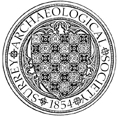Sussex Archaeological Collections: Sussex Archaeological Society
Submitted by Anonymous on
Sussex Archaeological Society

Submitted by Anonymous on
Sussex Archaeological Society
Submitted by Anonymous on
Suffolk Institute of Archaeology and History
Submitted by Anonymous on
Submitted by Anonymous on
Submitted by Anonymous on
Somerset Archaeology and Natural History Society
Submitted by Anonymous on
Shropshire Archaeological & Historical Society
Submitted by Anonymous on
Submitted by Anonymous on
Oxfordshire Architectural and Historical Society
Submitted by Anonymous on
Submitted by Anonymous on